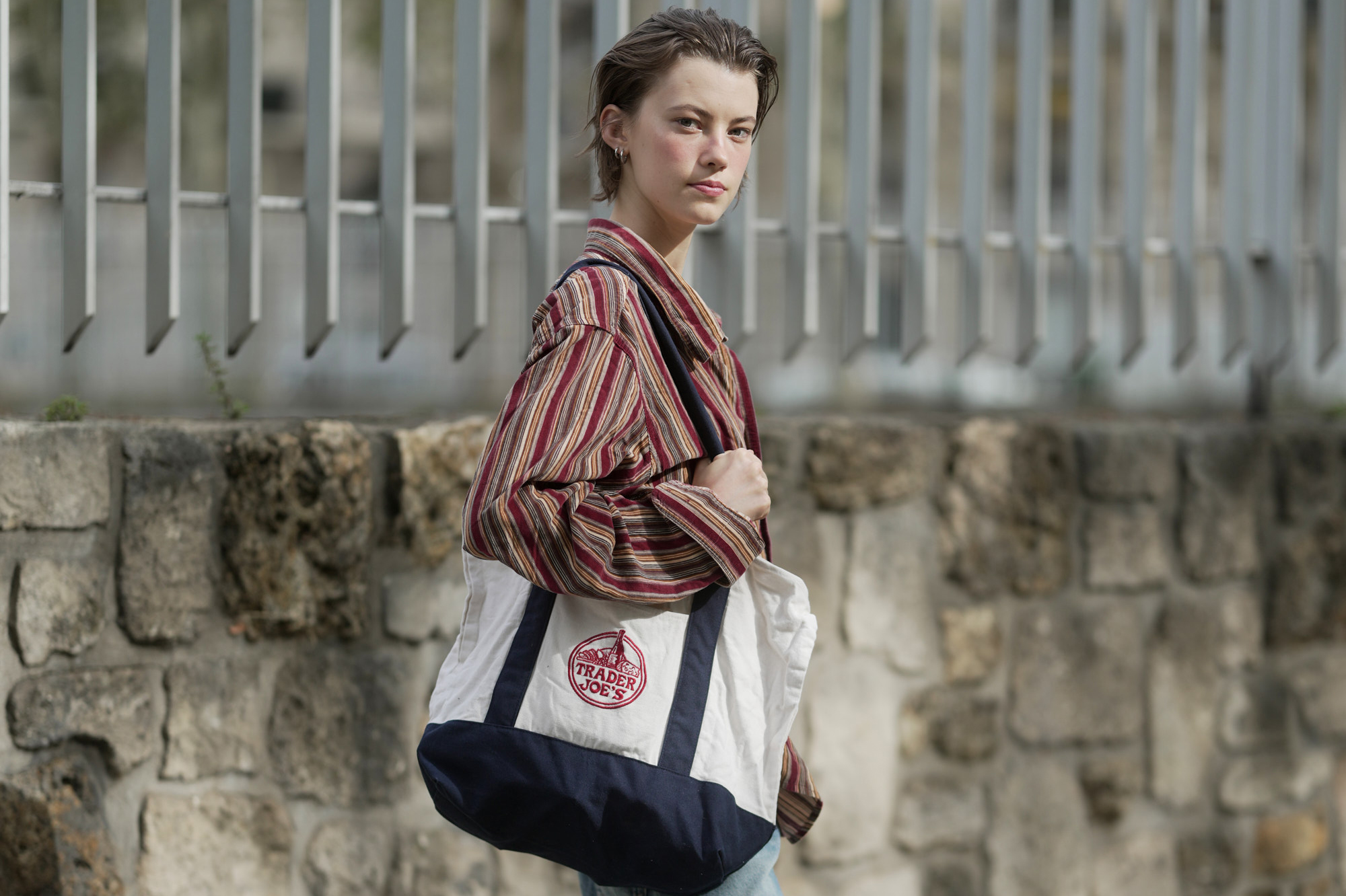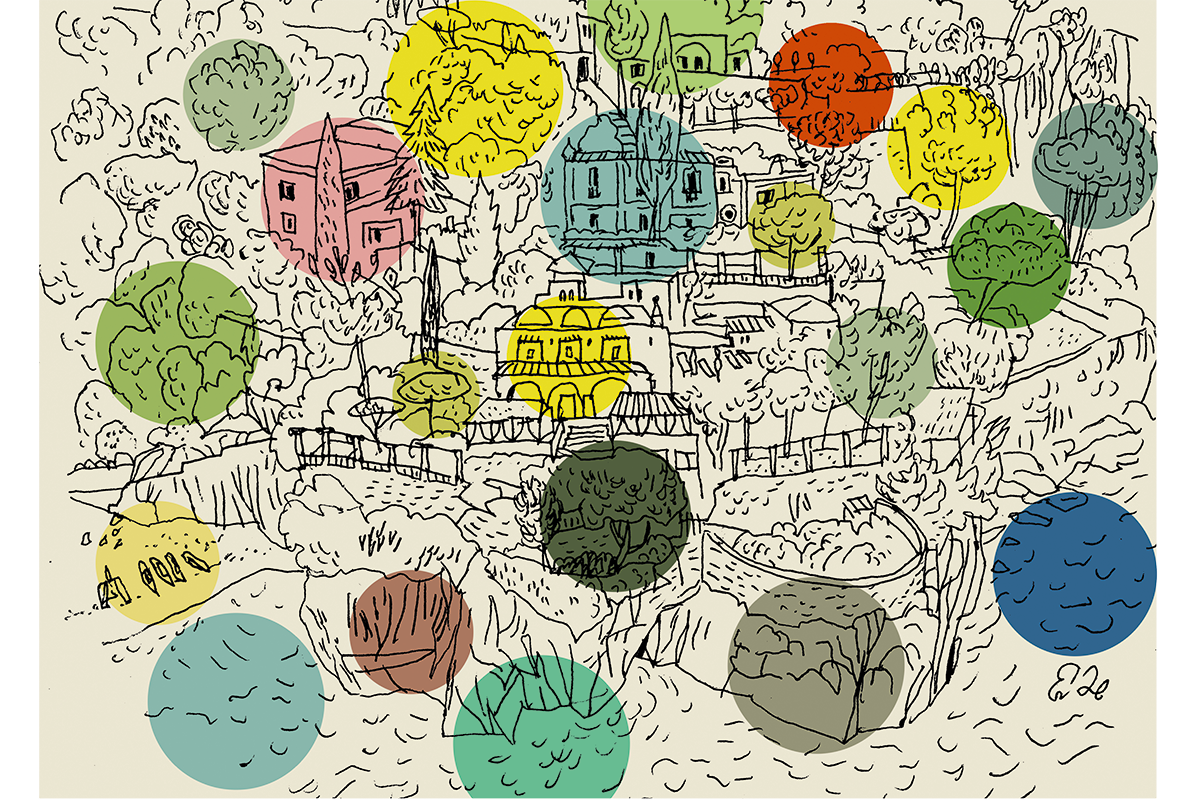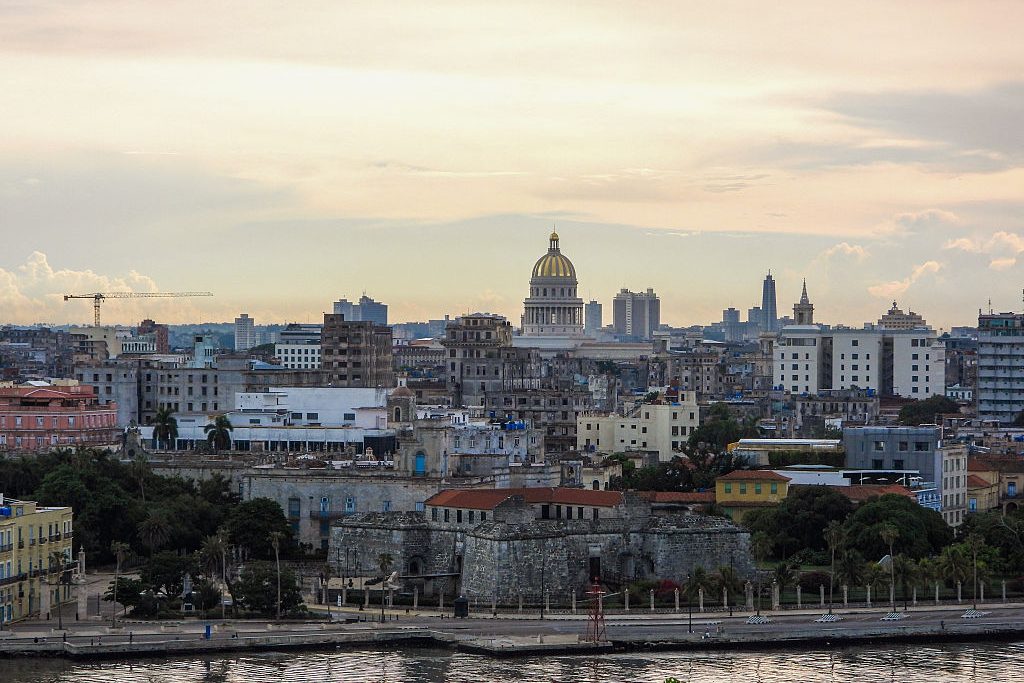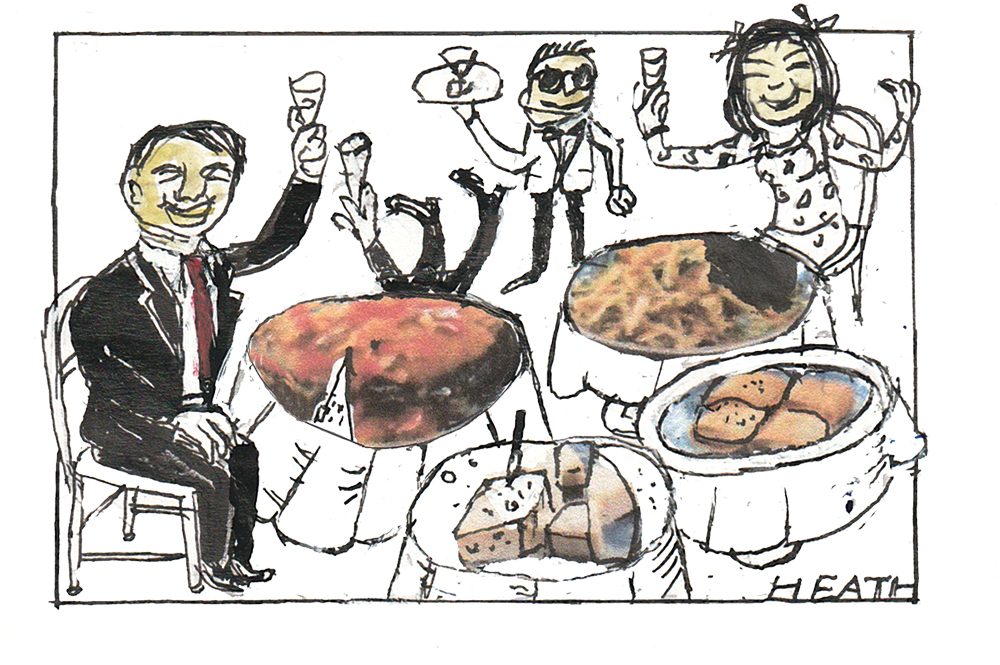I’ve always heard Americans describe the food in Rome as “authentic,” though maybe that’s only relative to our three square meals of Little Debbies, reconstituted meat and freeze-dried astronaut food. The things we eat are not authentic food.
But abroad, authenticity means anything sourced locally and served by a very small old woman with limited English. If a nonna told me she’d fished anchovies out of the Trevi Fountain and plucked chicory from cracks in the sidewalk, I’d swoon and think: they really know how to do it right in Europe.
Authenticity, to me, also means a little discomfort. Bones in your rabbit stew. Lugging a suitcase up a dirt road. Getting pickpocketed. So I was wary of staying at Palazzo Ripetta, with its footmen in blue tails and a bronze Pomodoro orb glinting in the lobby. At lunch in the hotel restaurant, San Baylon, I felt a flicker of panic when they brought out a small chair just for my handbag. If even an inanimate object wasn’t allowed to feel discomfort, what did that mean for me?
In Europe, I’ve felt most tired, hungry and poor – yet also most alive. That’s mostly due to my habit of traveling on a tight budget, staying in strangers’ outbuildings or living rooms and avoiding anything with black lacquer, mirrored glass, or – God forbid – gold taps. Sometimes I wonder if this is self-flagellation for the sin of being born American.
I stiffened slightly when San Baylon’s chef, Christian Spalvieri, sent out a starter scattered with dainty purple flowers – a flourish I usually find a bit Chef’s Table. Call it inverse snobbery, but I’ve never seen much point in flowers on my food unless they’re stuffed with cheese and anchovies and fried into oblivion. That’s the traditional Roman way of using the golden flower at the end of a zucchini. It is one of Rome’s best dishes and originally came from the city’s Jewish ghetto.
The next day, Christian atoned for the flowers by guiding me through the busy stalls of Mercato Trionfale. From the outside, the building looks like a satellite made of breezeblocks and flatscreen televisions. It must have looked futuristic when first built in 2009, but now it has a slightly dystopian air. But that hardly matters. If it were prettier, it might be ruined by Instagram pilgrims.
While it wilts my soul a bit to see selfies in sacred places, the Church needs to make money somehow
Inside, stalls sell various sorts of artichokes, zucchini with the flowers still attached, caciocavallo hung up like balloons in a carnival game and salami the thickness and length of a firehose, wrapped around a wheel. We stopped for lunch at Panificio Bonci. I suppose “elevated pizza” has become passé, like Wagyu burgers or truffle fries – ordinary things done with extraordinary ingredients. But Gabriele Bonci was a pioneer when he began using only high-quality, organic flour and seasonal toppings. His is ambitious, artful pizza – and I can’t begrudge it. It’s also gloriously sloppy and indulgent. Bonci’s pizzas leave your fingertips shimmering with olive oil. The way the cheese stretches is, frankly, pornographic.
Not far from Panificio Bonci lies St. Peter’s Square. A train of young people walked towards the basilica following a large wooden crucifix, saying the rosary in Latin. It’s been an odd time of joy and sorrow for the Church, with this square seeing both the funeral of a pope, the announcement of a new one and the beginning of a Jubilee Year within the space of a few months. Jubilees come around just once every 25 years. One of their main attractions is the Holy Door at St. Peter’s, where pilgrims get an indulgence for walking through it (the Catholic Church still does indulgences, but they’re free now). Assuming you’ve been to confession, it’s said to fast-track you through purgatory and into heaven.
I briefly worried about not taking up the offer, aware of all the cheese and pancetta I’d consumed in the past 48 hours – which might be the thing to clog an artery. The pope who came up with the idea for the first Jubilee in 1300, Boniface VIII, was also concerned that his food would be the end of him. He ate with “magic knives” meant to detect poison, having made many enemies by declaring himself the supreme authority over all Christians. I suspect the food-taster he employed was probably the more effective precaution.
By the grace of God, Pope Francis met a more peaceful end than Boniface, who was kidnapped for three days and died a month later, presumably from the stress. After the death of a pope, Gammarelli – the tailor that has dressed popes for more than 200 years – would traditionally begin preparing three ivory cassocks for the next pontiff, in small, medium and large. To honor Pope Francis, who died on Easter Monday, the Vatican recycled old Gammarelli outfits for the new pope Leo XIV, although in contrast to Francis’s simple white, Leo XIV made his first appearance wearing a red cape and a stole with delicate gold embroidery.
Gammarelli’s workshop feels half museum, half Catholic-school principal’s office. I was nervous when I stepped inside, feeling the faint embarrassment of realizing a store only sells men’s clothes, except this time I couldn’t say, “Oh, I’m just shopping for my dad.”
Around the corner from Gammarelli is the church of St. Ignatius of Loyola. A long line of people waited their turn in front of an elevated pane of glass. Did it hold a saint’s relic – a shard of bone or a blood-stained cloth, perhaps? Some raised their phones to the glass. As I got closer, I saw it was a mirror. Insert one euro and the ceiling fresco lights up for a few seconds. The painting depicts St. Ignatius ascending toward the flickering light of heaven. The mirror spares you from craning your neck – and happens to be an excellent spot for a selfie.
Normally I’d scoff at such lengths to avoid discomfort, but I sort of admired the freedom these people had to be shameless tourists. And while it wilts my soul a bit to see selfies taken in sacred spaces, the Church needs to make money somehow.
Rome put me in a forgiving mood, and I hoped others might offer me the same grace when I took pictures of my food before eating it or mispronounced grazie. I came to discover “authentic Rome” but decided instead to embrace the comfort and joy of it all. After all, it’s no fun wearing a hair shirt – even one custom-tailored by Gammarelli.
This article was originally published in The Spectator’s July 2025 World edition.























Leave a Reply